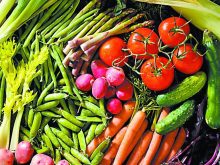REGINA — An analysis of eight food items found little connection between higher grocery prices and what farmers earn at the farmgate.
The Agricultural Producers Association of Saskatchewan and market analyst Kevin Grier looked at beef, pork, flour, bread, canola oil, lentils, margarine and beer.
Related stories:
APAS president Ian Boxall said the study came from a meeting resolution two years ago.
“When consumers started to see the grocery store prices go up, it was about the same time that we saw commodity prices go up and there was some blame placed on the farmer that they were the reason for the increased price on grocery store shelves,” he said. “We didn’t believe it was correct so we commissioned a report.”
The analysis used the United States Department of Agriculture methodology to determine how much of a farm commodity is required to produce the retail product, as well as Statistics Canada pricing data.
“There is no direct correlation between commodity price increases and the increased price at the grocery store,” said Boxall.
The report found farmers got a greater share of products that required less processing, such as flour and beef, and a smaller share of products like beer and bread.
Farmers earned the greatest share of canola oil, at 41.6 percent of three litres, and the least from beer.
“Beer, I think was the one that stood out to me, that the portion that a farmer gets on a bottle of beer is very small, two percent,” Boxall said.

The report also compared inflation rates of the eight products and the component directly attributable to commodity prices.
That data showed the inflation rates at retail were higher. For example, bread prices rose by 18 percent but the amount attributed to wheat is only two percent.
Boxall said he hopes people can use the report to learn more about where their food dollars go and to ask others in the supply chain what effect they have on grocery costs.
Commodity prices fluctuate while food retail costs and farm input prices continue to increase. Boxall said in October canola dropped by 21 percent but margarine prices increased 17 percent. Similarly, wheat declined 19 percent while flour went up four percent and bread by three percent. Barley prices dropped 16 percent but beer went up 19 percent.


















